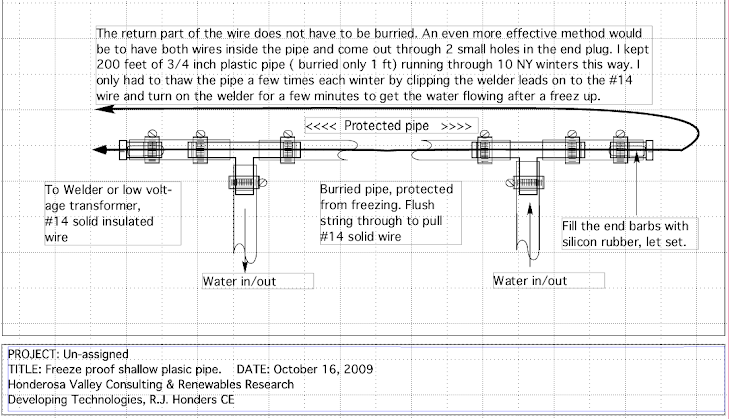
Hi Robert,
Thank you so much for your generous answer. As I am not electrical, and so I am really not able to understand those diagrams and some terms, before I contact a technician here to helping me with the job, let me ask you some, in my words, willing to get your answer in the most possible simple words (as if it were for kids!):
Thanks in anvance for your teachings!.
Cheers,
Felipe
1- Are pumps (and electric motors) used as PAT (and MAG), just as they are/come from manufacturer?, or, do they need to be modified for a micro-hydro (if so, what kind of modifications)?.
1. No modifications are needed. Just force the water into where it squirted out when it was a pump. You will need to add excitation capacitors to the motor to make it generate electricity all by itself. But if it is hooked to the grid you don't need any capacitors.
2- What is the capacitors function?
2. The capacitors basically store up a bunch of electrons in a few milliseconds and dump them back into the induction generator in the next few milliseconds. So the capacitors help to bounce the current back and forth in tune with 50 or 60 Hz (cycles per second).
3- Why is it neccesary to double (2x) the pump-labeled speed (rpm) of pumps, for micro-hydro purposes?
3. There are 2 extremes with a turbine / generator. At one end we have no load and the machine spins the fastest that the water velocity will allow. At the other end we load it down so much that the speed drops to 0 RPM. The best efficiency and maximum power happens somewhere close to the middle between these two extremes. And we know where we want to be operating normally (at the midpoint) so the no load speed should be around 2X that.
4- What 'delta' connections is?
4. Delta = triangle, the three windings are connected in a triangular configuration, as opposed to star configuration. See: http://www.allaboutcircuits.com/worksheets/deltawye.html
5- What are the differences (both constructive and energy-flow-path meanning) between electric motors, and generators?.
5. Induction motors and induction generators are identical in every way. You can have an induction motor plugged in, running at 1800 RPM, consuming 746 watts (1 HP) and as soon as you start spinning that motor's shaft a little faster (with say a gasoline motor coupled to the shaft) it will start to generate electricity and feed it back to the grid and any other loads connected. This is a great and legal way to make your meter stop or even reverse.
Rob
Someone asked:
How can I estimate roughly the maximum no load speed when impeller diamater and the net head are known.
No Load RPM= (19.1)((SQRT(64 H))/D)
Where H= Head in feet D= impeller diameter in feet
More often, you would know the full load normal operating speed of the generator to produce 60Hz from the name plate or from the number of poles. Also the head is fixed and known. So you'll want to know what the impeller diameter should be for a direct coupled setup:
Impeller Diameter in inches =(230)((SQRT(64 H))/R)
Where H = head in feet, R = No Load RPM OR 2X name plate RPM and SQRT = Square root









No comments:
Post a Comment